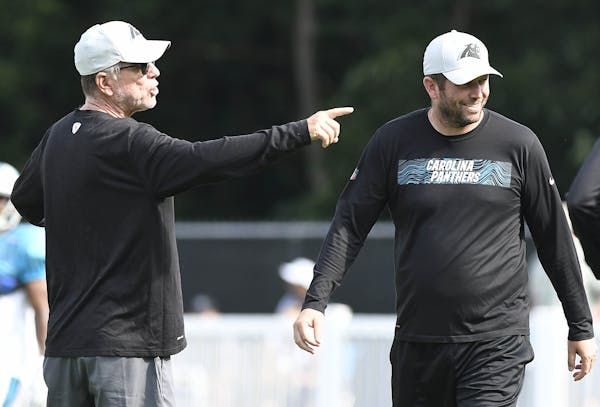NFL offenses are getting closer to mastering the forward pass, with completion percentages and passing yardage totals steadily ascending through the years.
Maybe now is the time to turn our attention, instead, to the worst play in football: the backward pass.
Instances where quarterbacks throw overhand and backward to running backs or wide receivers are high-risk, low-reward plays – with the Vikings offering specific evidence to that overall claim twice in the last three weeks. Let's take a closer look at the examples and the data:
*According to data from Pro Football Focus, which charts plays from every game, there have been 55 such backward passes in the NFL since the start of the 2017 season.
Those 55 plays have gained an average of 2.06 yards. Considering the average play overall in 2017 averaged more than double that at 5.3 yards and the average running play – which a backward pass technically is – gained almost exactly double that amount at 4.1 yards, you have a low reward.
And because an incomplete backward pass is a live ball as a fumble instead of an incompletion, those 55 plays resulted in three turnovers — roughly one every 18 plays. In 2017, there was a turnover about once every 50 offensive plays overall in the NFL. So there's your high risk — almost three times the overall turnover rate, albeit in a pretty small sample size.
By contrast, there have been 155 swing passes — similar plays thrown forward — since the start of the 2017 season. Those have gained 5.2 yards per attempt, which is both a decent and safe gain. But again per PFF, six of those 155 attempts resulted in dropped passes. If those were backward passes, they'd be fumbles. Instead, they were merely incomplete passes.
*That said, there is a question of whether a backward pass in some cases is the intended design of a play. Sometimes a running back might run a bad route and find himself behind the quarterback when the ball is thrown, or a QB might not drop back as far as he should.
But other times, the intent is clear: The QB turns and fires a backward pass — basically a longer overhand version of a toss pitch to a running back — in an attempt to exploit a defensive coverage on the outside.
The benefit of any pass — forward or backward — that is completed behind the line of scrimmage is that it allows offensive linemen to block up the field.
And it should be noted that a backward pass can be used as part of a trick play because the player catching the pass can still throw a forward pass from behind the line of scrimmage.
*So there are clearly intentional and unintentional reasons backward passes happen. But it seems just as clear that the risks outweigh the benefits when they happen.
The data in the first section mashes together all the intended and unintended consequences of 55 backward passes since the start of the 2017 season, but you can't just discard unintended consequences when examining results.
In the case of the Vikings' backward pass Sunday against the Jets that lost seven yards but could have been so much worse if not for Stefon Diggs' heads-up play, New York's strong-side linebacker disrupted what the Vikings were trying to do by peeling outside instead of blitzing.
Kirk Cousins admitted some blame, saying he was trying to just throw the ball away and should have made sure the pass was forward or just ran forward for a short loss.
But watching the replay shows the intent appears to be a backward pass. Cousins sets to throw from between his own 26 and 27, while Diggs is running parallel to the 25-yard line.
And on the other recent Vikings example against the Eagles, when Roc Thomas dropped the short backward pass from Cousins – and immediately knew it was a live ball but couldn't recover – the Eagles had four defenders charging at Thomas with just three blockers to handle them. Even if he handled it cleanly, he might have been dropped behind the line of scrimmage.
If one small disruption or error can cause a potential disaster instead of merely an incompletion – particularly when the potential upside of a successful play is likely a modest gain at best – the flaw lies with the design more than the execution.
The Vikings covered their mistakes in both cases, getting a defensive stand after the turnover against Philadelphia and a long punt to change field position after avoiding a turnover against the Jets.
But the best plan for offensive coordinator John DeFilippo and the Vikings going forward would be this: don't throw it backward.
